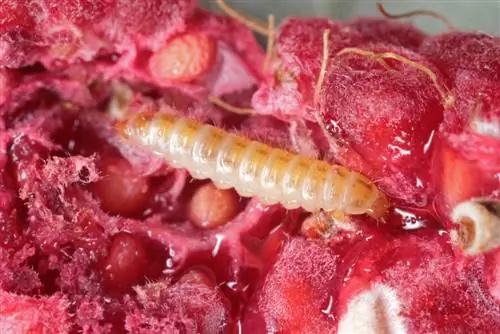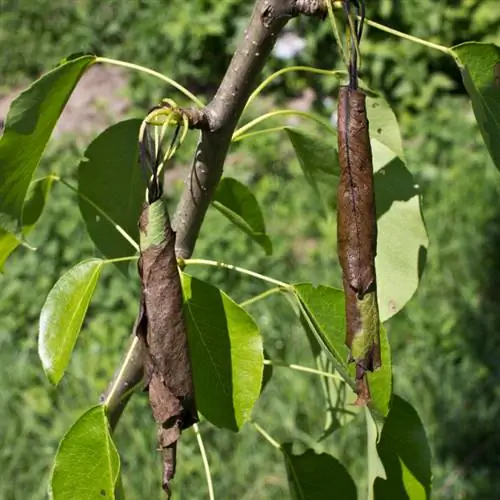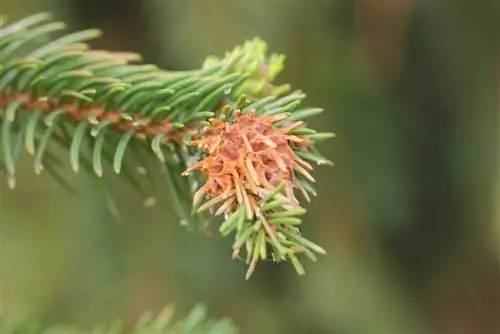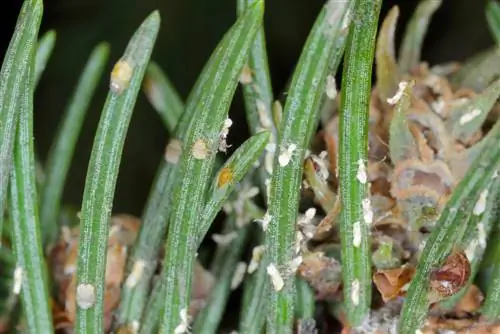- Author admin [email protected].
- Public 2023-12-16 16:46.
- Last modified 2025-01-23 11:22.
You've already planned the blackberries on your hedge for summer treats and jam and then this: little, white maggots got ahead of you! The culprits are probably raspberry beetles or the cherry vinegar fly, which has not been around for long.
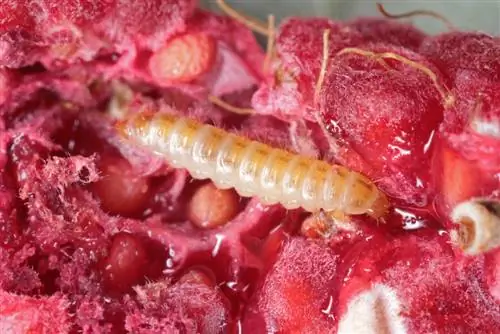
What causes maggots in blackberries and how to control them?
Maggots in blackberries often come from raspberry beetles or cherry vinegar flies. Countermeasures include manual collection of beetles, scent traps or insect protection nets. Infected fruits should be disposed of thoroughly to prevent further spread.
Larvae also love blackberries
Some insects prefer to lay their eggs in berries, where their larvae can comfortably feed and develop after hatching. Pests that target blackberries include:
- the raspberry beetle and
- the cherry vinegar fly
Raspberry beetle
The raspberry beetle prefers raspberries for its larvae, but it is also fond of blackberries. Its cream-colored larvae are also called raspberry worms or raspberry maggots, although they are not maggots. If you look closely you can see this from the 3 pairs of breastbones. They eat the fruit from the inside, resulting in a damaged, stunted and deformed berry on the outside.
Countermeasures
When it comes to the raspberry beetle, it pays to be careful. During the flight and egg-laying season from mid-May, you should repeatedly search your blackberry bushes for the light brown beetles and collect them manually
Traps with an attractant scent dispenser (€19.00 at Amazon) can also contain the infestation relatively effectively.
Cherry vinegar fly
The cherry vinegar fly is a pest immigrant from the Far Asian region and has only been present in Germany since around 2011. The light reddish-brownish fly is a major burden, especially for fruit growers. Their white larvae (in this case they are actually maggots) eat large quantities of the fruit from the inside, causing external decay and soft spots.
Countermeasures
If the infestation already exists, the only thing that helps is to remove the affected fruits as thoroughly as possible in order to contain the next year's population and dispose of them in organic waste (not in the compost!).
Otherwise, early prevention is the order of the day. For example, you can make your own traps by filling plastic bottles or cans half and half with water and vinegar and a splash of dish soap and hanging them in the bushes while the flies are flying and laying their eggs.
Putting up insect protection nets over the bushes in a timely manner promises effective help. Because of their tight mesh, the flies cannot penetrate and therefore cannot lay eggs on the fruit.

